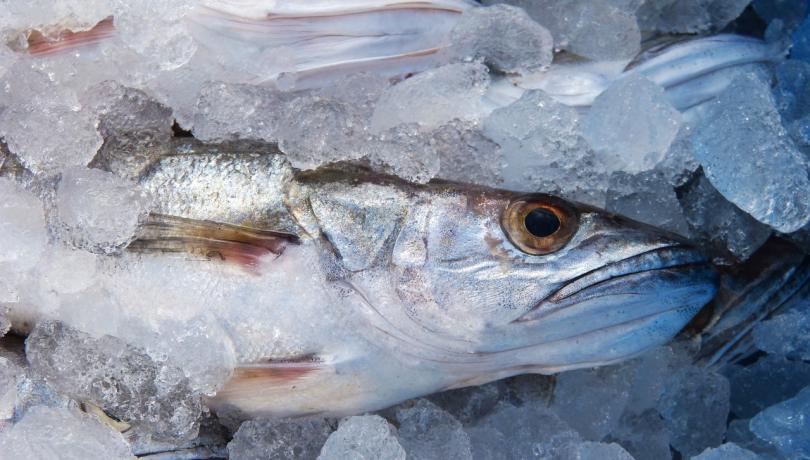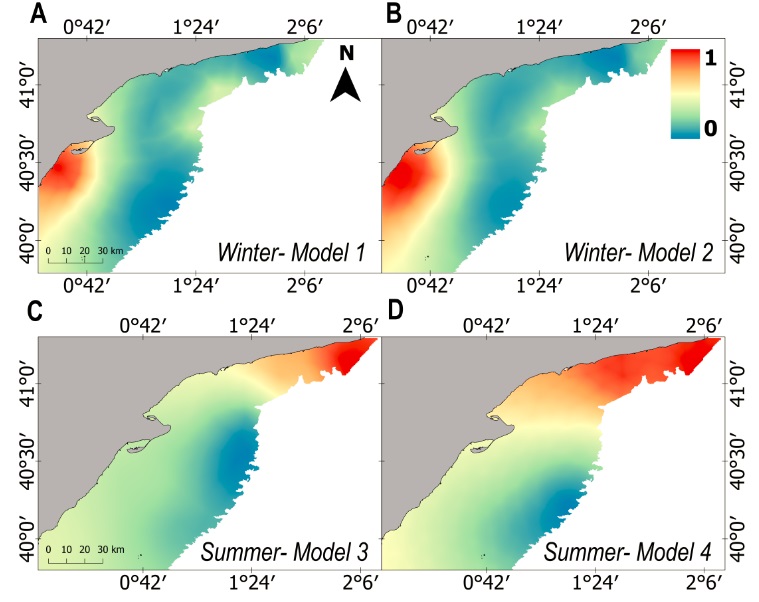The model takes into account the changes that occur in the variables between the summer and winter months, which may have implications for future adaptive fisheries management at the seasonal level.

European hake (Merluccius merluccius) is one of the most exploited species in the Mediterranean Sea, where it has great commercial value. To ensure the sustainability of stocks, it is important to know their spatial distribution, their trophic ecology and how they interact with the environment.
Generally, the models of the spatial distribution of species include only environmental factors, which may lead to imprecise predictions. However, a group of researchers from the Institut de Ciències del Mar (ICM) and the Oceanographic Center of Vigo of the Spanish Institute of Oceanography (IEO) has developed a new model that takes into account both environmental variables, such as depth or water temperature, and variables related to the species’ biology like prey distribution.
"This is the first time that biotic factors have been included in this type of models to study hake distribution in this area of the Mediterranean Sea, which has allowed us to obtain a better representation of the distribution of the species in this area", celebrates the predoctoral researcher at the ICM Elena Lloret, who has led the study published recently in the journal Frontiers in Marine Science that collects details of this model.
In this sense, Lloret emphasizes that "understanding the distribution of the species is important to identify the factors that determine its distribution and thus be able to make better predictions of the potential changes that may occur as a result of environmental alterations and human impacts".

The results of the work, carried out within the IMPRESS and PELWEB research projects, show that environmental variables have a greater impact on the distribution of hake populations. However, they reveal that the spatial distribution of their potential prey, which has nothing to do with the environment, is also important.
"In general, adult individuals have a preference for deep areas where the water is colder", details in this regard Lloret, who explains that to carry out the study they analyzed hake samples collected during two oceanographic campaigns -one in summer and another in winter- in 2013, in the western Mediterranean Sea, between Castellón de la Plana and Barcelona. This allowed the authors to see that during winter most adults were placed in the south of the Ebro delta, while in summer they moved to the north of Tarragona.
To better understand the results related to the distribution of the species, the researchers used trophic models based on the isotopic information from hake and its prey. These models are capable of determining the proportion that each group of prey represents for the predator's diet. According to these trophic models, in general, the smallest individuals feed mainly on small crustaceans and, as they grow in size, their diet changes and they begin to consume other preys and more fish.
The isotopic models also revealed that, during the summer, adults consume more crustaceans than in winter and that juveniles, despite having a diet dominated by crustaceans in both seasons, the proportions of each group of prey changed between summer and winter.
"Knowing in detail the diet of this species helps to better understand its spatial distribution, since changes in prey distribution can affect or determine the presence or absence of hake in these areas", points out Maria Grazia Pennino, researcher at the IEO and co-author of the study. According to the researcher, "the results of this type of project may have important implications for future adaptive fisheries management at a seasonal level".